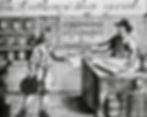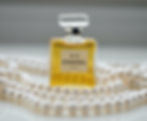7 Fun Facts: Elizabethan Pharmacies
- Mariela Rivero
- Jan 14, 2022
- 3 min read
Updated: Aug 14, 2022
In honor of National Pharmacist Day, let’s explore 7 fun facts about 17th-century pharmacists!
#1: Royal Court Apothecaries
A royal court apothecary assumed a most coveted role - one that came with prestige, insider medical knowledge, a rare title… and REWARD. What kind? Land!
Queen Elizabeth I loved gifting land to her royal servants. John Hemingway, her apothecary of several years, was granted a thirty-year lease of Santyngley Grange and all the lands thereof in Santyngley, Yorkshire! Of course there was a small fee he had to pay, but let’s focus on the big picture ;)

Modern Regions of England
#2: Apothecary = Pharmacopolus?
John Hemingway was described as a pharmacopolus. Hmmm, sounds like “pharmacy” or “pharmacist.” Maybe that’s because…
Latin: “pharmacopola” = a drug seller
Greek: “pharmakopōlēs” = a drug seller
“pharmaka” = drugs
“pōlein” = to sell
In other words, yes, Hemingway was an apothecary. John! Not Ernest. That’s the public narrative, at least.

"The Apothecary's Shop Opened" by William Faithorne. 17th century.
#3: In Charge of Urinals
The esteemed royal apothecary supplied urinals for those in the Council Chamber. For those wondering, the urinals were relatively inexpensive - rather surprising considering how expensive the rest of the wealthy’s stuff was.
Hemingway also sent orris powder, damask powder, and rose-water because the Queen liked everything to smell lovely. Can’t exactly disagree with her on that one.
Fun Fact: Orris root is also known as Queen Elizabeth Root!

Perfumes made with orris are still popular today!
#4: Not JUST an Apothecary
During and around the time of Queen Elizabeth I, it was typical for a regular apothecary to work more than one job to make ends meet.
Popular “co-occupations” included general retailing and tavern-keeping. In Stratford-upon-Avon, “by far the most usual secondary occupation was victualling – brewing and selling ale.” (1)

"Shakespeare and His Friends at the Mermaid Tavern" by John Faed. 19th century.
#5: The Book
Before becoming an apothecary, one had to study Pharmacopoea Londinensis. Want to read it? Click on the bubble!!
#6: Female Apothecaries
Following the death of her husband, an eligible widow had permission to take over the family business. Was she qualified? Glad you asked! According to the Company of Apothecaries, years working alongside your husband or father in the apothecary shop counted as an apprenticeship!
Bonus Story:
Susan Reeve Lyon was one such widow.
Susan was born in London to Dutch parents and later married a Dutch apothecary named William Reeve, whom she aided in their shop. This was an impressive feat, as the Company of Apothecaries of London forbade foreigners from joining.
After his death, Susan “ran the show” with the aid of Thomas Beedham, her apprentice. In 1627, she married another William. BUT the Company of Apothecaries refused to accept Mr. William Lyon into their society. A few years passed before the Company finally permitted him to practice alongside his wife, as long as a most skillful Susan guided him. Quite the compliment to Susan…
Later down the road, when the College of Physicians of London prosecuted Susan for selling medicine to a Dutch person, they characterized William Lyon as “no Artist” and Thomas Beedham as Susan Lyon’s apprentice. In other words, they recognized Susan as the head. Susan. The woman :)

"Early Italian Pharmacy". 17th century; oil on canvas.
#7 Shakespeare Sued Philip Rogers
Ah… another example of Shakespeare rendezvousing at court.
Philip Rogers was — you guessed it — an apothecary. And he bought — did you predict this one? — malt. From Anne Shakespeare. While Mr. Shakespeare was away. And Roger only paid a very small amount back. How absolutely AGGRAVATING.
So in 1604, Mr. Shakespeare made his move. On top of the remaining balance, he demanded additional compensation.
Who won the case? We actually don’t know. Unfortunately.
Who’d you bet on?
Written by Mariela Rivero
Edited by Laura Yumi Snell
References (Direct Quote & Images):
1. Jones, J. (1996). Family Life in Shakespeare's England. Stroud: Sutton Publishing.
2. Science History Institute. Will Brown.
3. The Sequinist.
4. UK Map 360.


